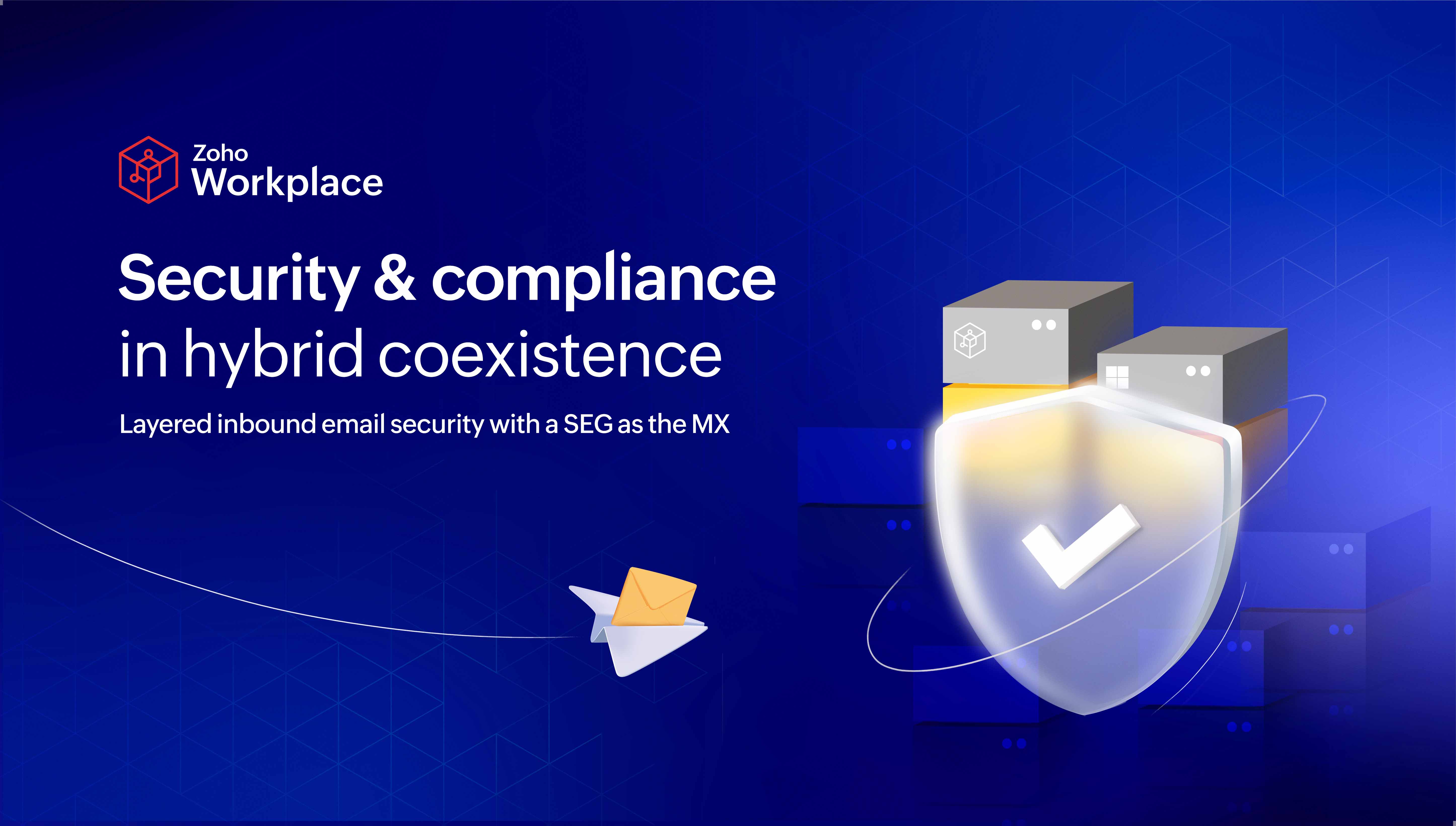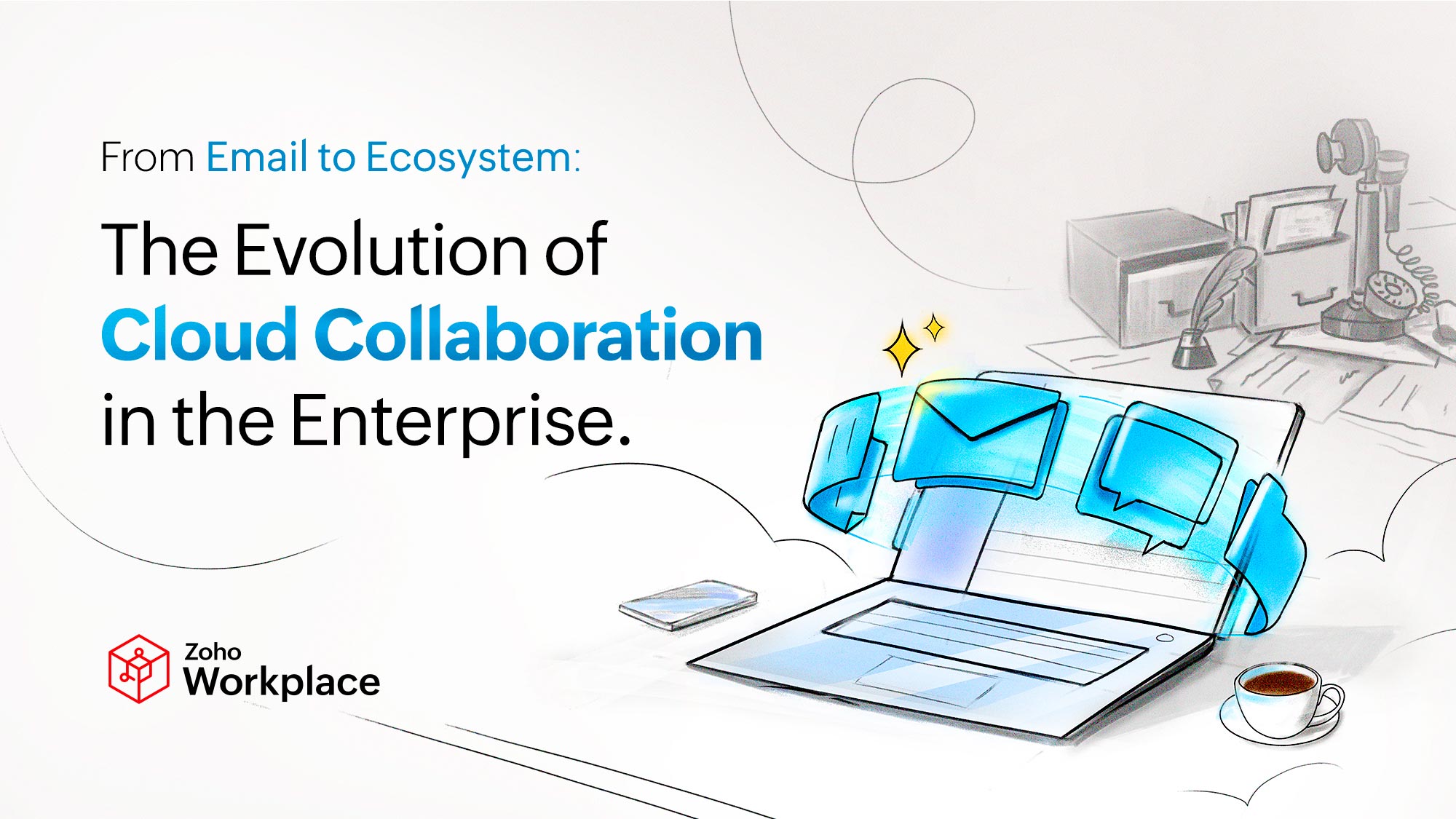- HOME
- All Products
- Marketing emails: Harnessing the power of customer-centric strategies
Marketing emails: Harnessing the power of customer-centric strategies
- Published : August 24, 2023
- Last Updated : September 12, 2023
- 622 Views
- 8 Min Read
In the third installment of our series, we explore the world of marketing emails and how they serve as potent tools for crafting customer-centric journeys. As you explore this article, remember that each subsequent piece further enriches your understanding of the intricate interplay between various email types, unveiling the holistic potential of email automation.
Read more:
- Email automation: Streamlining operations in the workplace
- Business emails: Embracing efficiency and security in the workplace
- Emails that matter: Transactional email
- Behind the scenes: How operational emails synchronize IT and enterprise workflows
Marketing emails, a fundamental component of the digital age, hold immense potential in shaping customer engagement and driving business success. These emails serve as a strategic means of communication, allowing businesses to connect with their target audience effectively. The primary purpose of marketing emails lies in nurturing leads, promoting products or services, and fostering long-term relationships with customers. By leveraging the power of storytelling and persuasive content, marketing emails can evoke emotions and influence customer behavior, leading to increased brand loyalty and conversion rates.
In a study of 1,000 small business owners, email marketing was ranked as the second most effective medium for building brand awareness. (Campaign Monitor, 2019)
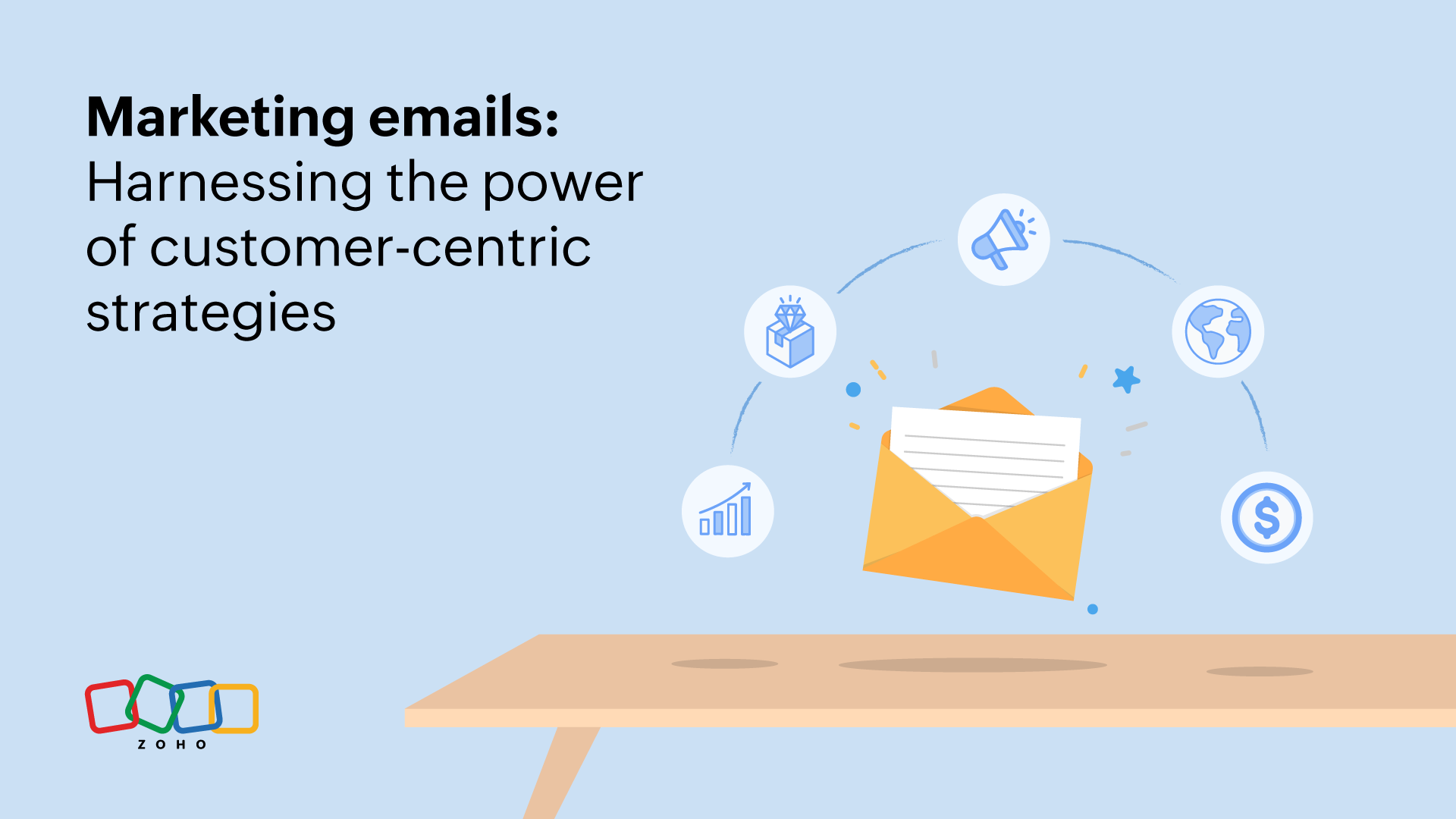
Touchpoints
Marketing emails play a crucial role in customer acquisition and retention. They act as vital touchpoints throughout the customer journey. Welcome emails greet new subscribers, while abandoned cart reminders encourage purchases. Personalized recommendations, drip campaigns, and post-purchase follow-ups nurture leads. Birthday and anniversary emails offer special offers, re-engagement campaigns target inactive subscribers, and loyalty program updates communicate rewards. Upsell offers, cross-sell offers, and customer surveys enhance customer engagement. Newsletters, product launches, event invitations, and referral program invitations also serve as touchpoints. Automated email workflows trigger these interactions based on customer actions, fostering stronger connections, boosting conversion rates, and enhancing loyalty.
Marketers who use segmented campaigns note as much as a 760% increase in revenue. (Campaign Monitor, 2019)

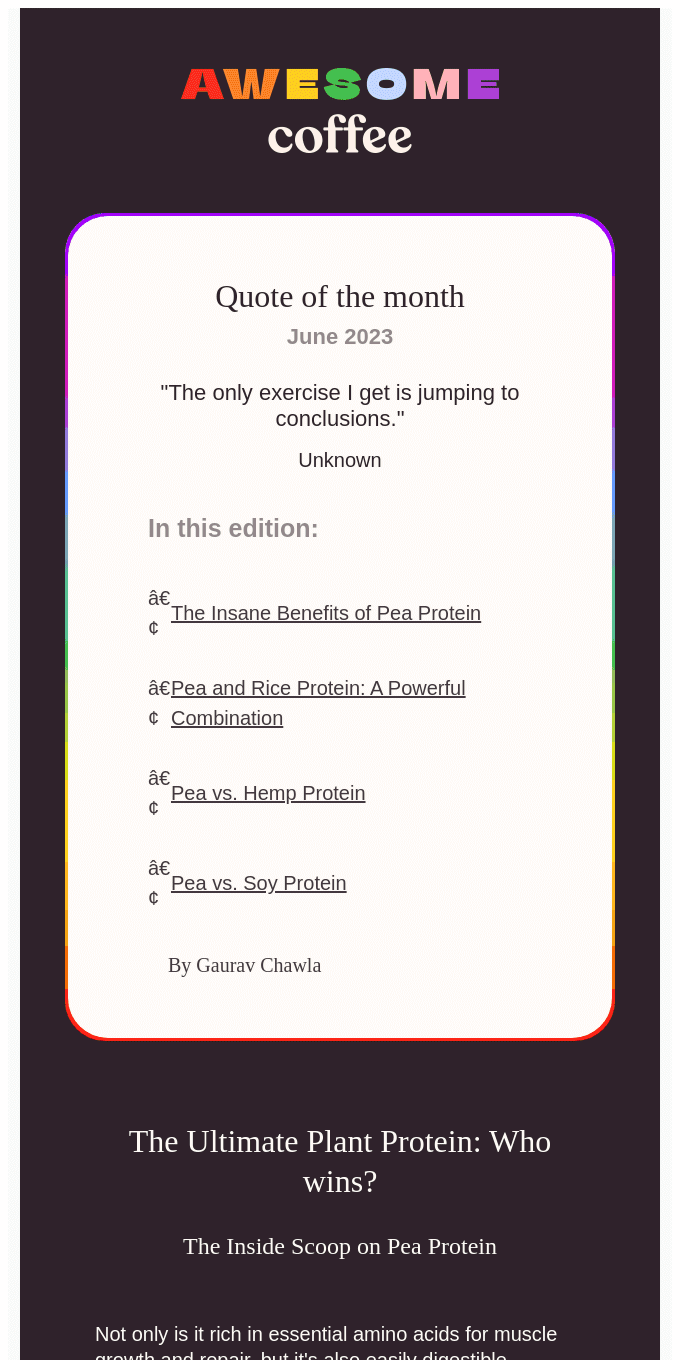
Promotional email Newsletter email
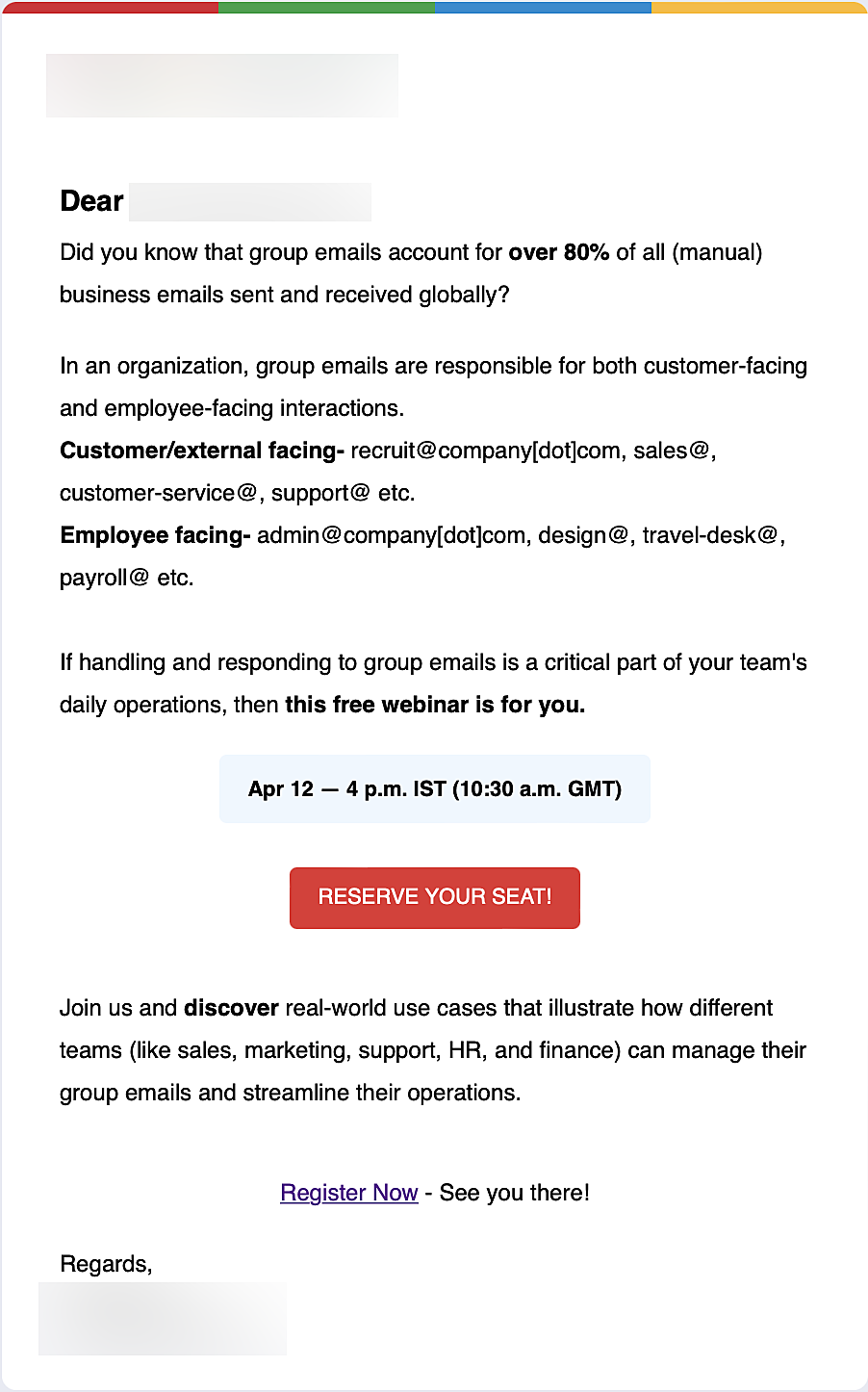
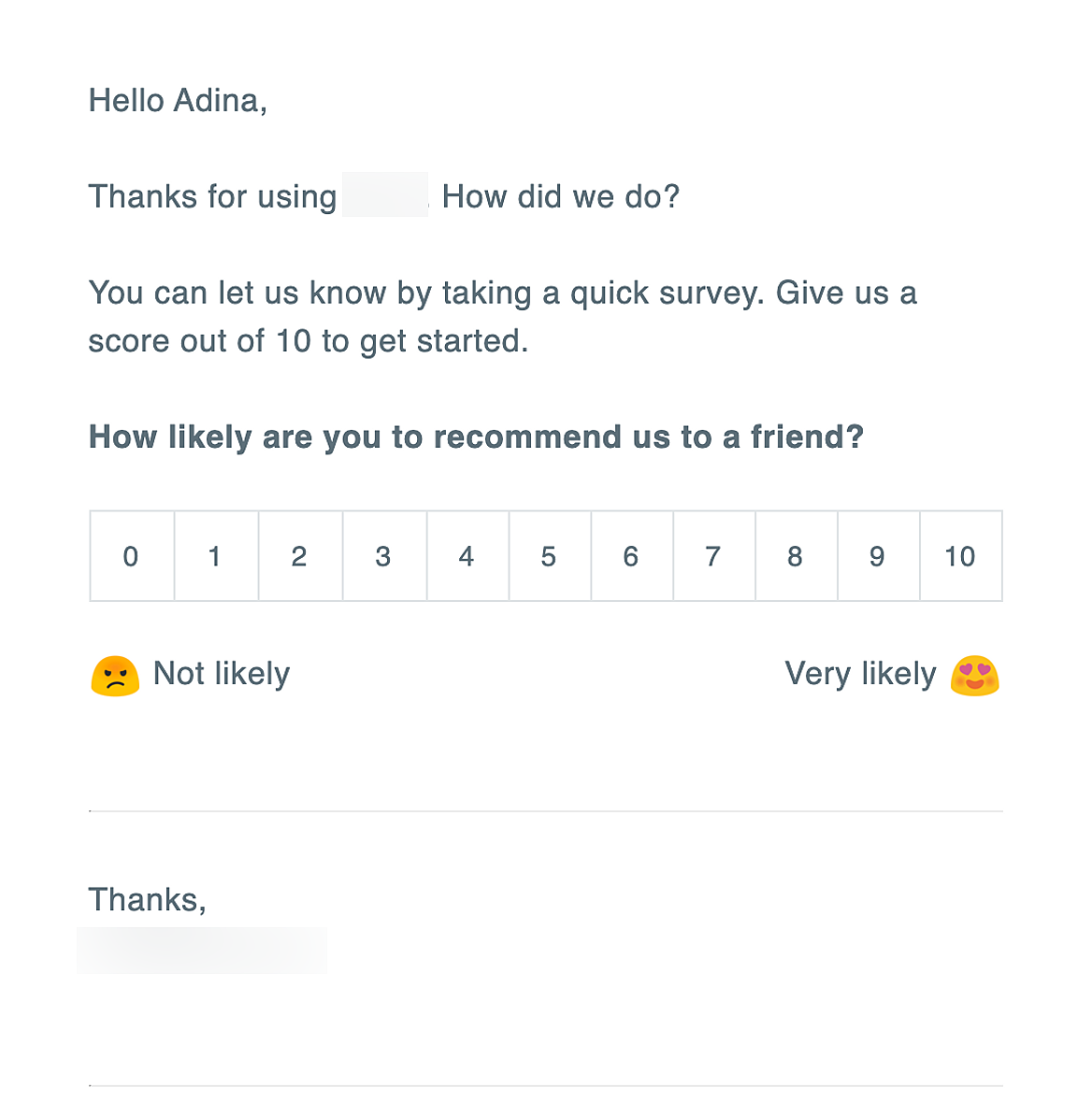
Invite email Survey email
(Image source: www.reallygoodemails.com)
The implications for recipients
Marketing emails have become an essential part of businesses' communication strategies to engage with the audience effectively. However, the increasing reliance on marketing emails has brought forth various implications for the recipients or subscribers.
As your audience navigates their inboxes, they encounter challenges such as email overload due to the sheer volume of emails they receive, leading to important messages getting lost. When marketing emails lack personalization and relevance, recipients may become disengaged or even unsubscribe. Moreover, deceptive marketing emails pose phishing risks, jeopardizing recipients' sensitive information and security. Additionally, over-communication and excessive data sharing in marketing emails can raise privacy concerns among subscribers.
Individual recipients and their IT teams can use several measures to mitigate the implications of marketing emails on their email tools and overall experience. Here are some strategies:
- Advanced email filtering and categorization: Recipient IT teams can implement robust email filtering and categorization systems to manage email overload effectively. By using intelligent algorithms, emails can be organized based on priority, relevance, and sender reputation, ensuring important messages aren’t buried in the inbox.
- Optimize email settings: Recipients can adjust their email settings to control the frequency of marketing emails. Recipients can utilize the customization options in their email clients to manage their email experience efficiently. Features like rules, folders, and unsubscribe options can help streamline incoming marketing emails.
- Enable two-factor authentication (2FA): To safeguard against phishing risks, both IT teams and recipients should enable 2FA for email accounts. This additional layer of security helps prevent unauthorized access and protects sensitive information.
- Educate recipients about phishing: IT teams and organizations can conduct regular awareness training to educate recipients about recognizing phishing attempts and deceptive marketing emails. By being informed, recipients can be cautious and avoid falling victim to phishing scams.
- Encourage feedback and reporting: IT teams can set up mechanisms for recipients to report suspicious emails or phishing attempts. This feedback loop helps the IT team identify potential security threats and take appropriate action.
- Unsubscribing and reporting: Recipients should be encouraged to unsubscribe from irrelevant or unwanted marketing emails. IT teams should provide easy-to-find unsubscribe links in marketing emails, and recipients can report suspicious emails to their IT security team.
By adopting these proactive measures, both IT teams and individual recipients can enhance the security, privacy, and overall email experience, mitigating the potential implications of marketing emails in the workplace.
Challenges for marketing teams
Marketing teams face several challenges in managing and optimizing marketing emails to achieve their desired outcomes. Addressing these challenges necessitates a close collaboration between marketing and IT teams, leveraging technical expertise and innovative solutions to create seamless and impactful marketing email campaigns. Here are some of the challenges:
| Challenge | Addressing the challenge | |
| Email deliverability and spam filters | Spam filters pose a significant challenge for marketing teams as they strive to ensure their emails reach the intended recipients' primary inboxes. When emails are flagged as spam, it hampers the campaign's reach and impact. | Marketing teams need to collaborate closely with IT to implement effective email authentication protocols like SPF, DKIM, and DMARC. SPF verifies that the sending server is authorized to send emails on behalf of the domain, DKIM adds a digital signature to verify email authenticity, and DMARC further enhances email security by specifying email handling policies. |
| Personalization at scale | Implementing personalized content in marketing emails while managing large audience segments and contextually tailored messages. | Marketing teams can leverage AI-driven customer data analysis to craft personalized content, while IT teams can ensure scalable infrastructure to handle large audience segments. |
| Email rendering across devices | With diverse devices and email clients, ensuring consistent email rendering and user experience is a technical challenge that demands responsive design and thorough testing. | Collaboration between marketing and the design, UI/UX teams ensure responsive email design, thorough testing across devices and email clients, and quick resolution of rendering issues. |
| Data privacy and compliance | Marketers face the challenge of adhering to strict data privacy regulations, such as GDPR and CCPA, while handling customer data responsibly. | To address the challenge of data privacy and compliance, marketing teams should collaborate with IT to implement a comprehensive data management system that encompasses data classification, encryption, and access controls. Ensuring secure storage of customer data, complying with regulations, and limiting access to authorized personnel are essential steps. Regular audits and reviews of data-handling processes aid in identifying and rectifying compliance issues. Marketing teams should conduct data protection impact assessments (DPIAs) in consultation with data protection officers (DPOs) to define and refine their processes, ensuring the secure and responsible use of customer data. |
| Integrations and data synchronization | The challenge of integrations and data synchronization arises when marketing teams need to unify customer data from various sources, including CRM systems and other tools, to deliver effective lead nurturing. | Marketing and IT teams can collaborate on integrating marketing email platforms with CRM systems(DPIAs) and other tools, ensuring seamless data synchronization for effective lead nurturing. Marketing teams should conduct data protection impact assessments (DPIAs) in close consultation with data protection officers (DPOs) to meticulously identify and assess potential risks related to data transfer, storage, and processing. DPIAs empower marketing teams to take a proactive approach in safeguarding customer data, mitigating potential risks, and maintaining compliance with data protection regulations. |
| Security against phishing and spoofing | The challenge lies in safeguarding the brand and customers from email phishing attacks and spoofing. | To address this, IT teams can deploy advanced email security measures, including DMARC and SPF, to authenticate outgoing emails and prevent email spoofing. Marketing teams play a crucial role in educating customers about recognizing phishing attempts through email communication and reinforcing security practices. |
| Scalability and infrastructure | As the email subscriber base grows, marketers need scalable infrastructure and reliable email service providers to handle increasing email volumes efficiently. | IT teams can ensure the scalability of email infrastructure to handle increasing volumes, while marketing teams can plan and execute campaigns efficiently with minimal disruptions. |
It’s crucial for organizations to invest in advanced tools, security measures, and data management processes to deliver meaningful and relevant content while respecting customer privacy and ensuring a smooth customer experience.
Vendor landscape
The vendor landscape of marketing email platforms is diverse and dynamic, offering a wide array of solutions to cater to different stages of process maturity. At the early stages, organizations may opt for user-friendly platforms like Zoho Campaigns and Constant Contact, which provide essential features for basic email automation. As marketing teams mature and their needs evolve, they may seek more sophisticated solutions such as HubSpot and Mailchimp, offering advanced inbound marketing capabilities, AI-driven personalization, and comprehensive analytics.
Process maturity and adoption of advanced features
As marketing teams mature, they progress from basic email campaigns to embracing more advanced features. Audience segmentation becomes a priority, leading to personalized and targeted content. A/B testing enables data-driven optimization, while dynamic content customization ensures relevant messaging. Further growth introduces AI-driven personalization and behavioral triggers for timely, individualized interactions. However, with this growth comes the challenge of ensuring privacy and security, as well as compliance with regulations. Marketers must navigate data privacy laws, anti-spam regulations, and GDPR compliance to maintain customer trust and uphold data protection standards.
As marketing teams adopt more sophisticated email marketing strategies, it becomes even more crucial to configure secure email infrastructures, implement advanced security measures, and ensure compliance with data protection regulations. By working closely with the IT team, marketing teams can strengthen the security of customer data, protect against phishing and cyber threats, and adhere to privacy regulations. This collaboration fosters a unified approach to email marketing, where marketing teams can focus on engaging content and customer experience while relying on the IT team's expertise to ensure data integrity and security.
Wrapping up: The need for empathy in marketing emails
Achieving process maturity in marketing emails is a journey that requires a balance of technical expertise and empathy toward customers. Marketers must continually refine their strategies to leverage advanced features and prioritize customer privacy and security. By understanding their audience and delivering relevant, value-driven content, marketing teams can foster meaningful connections with their customers. Empathy in marketing emails ensures that recipients feel respected, understood, and engaged, ultimately driving brand loyalty and business success in the competitive landscape of email marketing.
This article is co-authored by Sandeep Kotla and Vignesh S.
Sandeep is an accomplished inbound marketer at Zoho Corporation, specializing in digital workplace strategies, digital transformation initiatives, and enhancing employee experiences. Previously, he handled analyst relations and corporate marketing for Manage Engine (a division of Zoho Corp.) and its suite of IT management products. He currently spends most of his time re-imagining and writing about how work gets done in large organizations, reading numerous newsletters, and Marie Kondo-ing his inbox.
Vignesh works as a Marketing Analyst at Zoho Corporation, specializing in content initiatives and digital workplace strategies. He's a passionate creator with a penchant for marketing and growth. In his free time, you can see him shuffling between books, movies, music, sports, and traveling, not necessarily in the same order.
